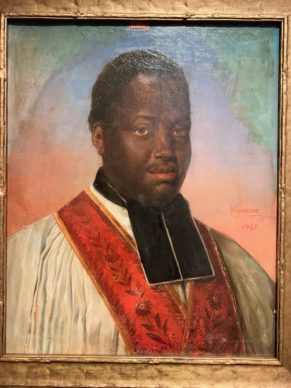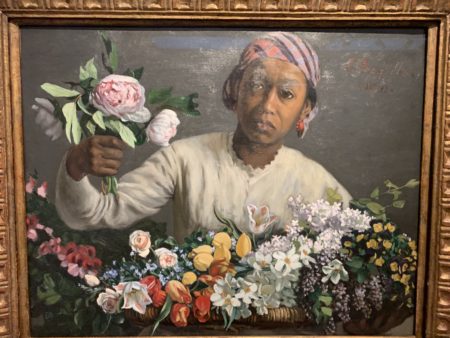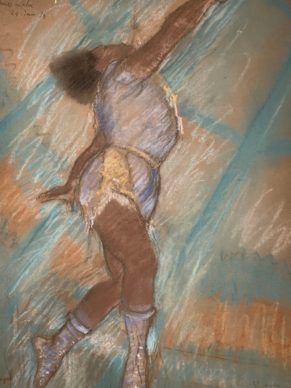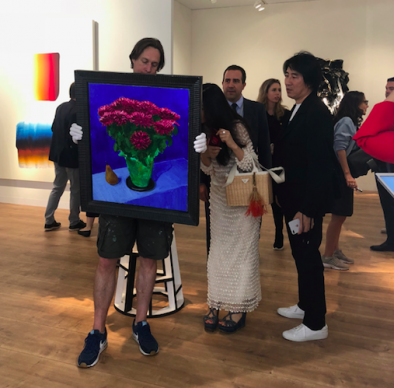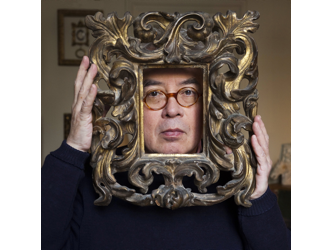People refuse to see me
“I am invisible, understand, simply because people refuse to see me. (…) When they approach me they see only my surroundings, themselves or figments of their imagination, indeed, everything and anything except me.”
Invisible man
In 1953 the American writer Ralph Ellison published a novel entitled “Invisible Man” that describes the nonexistent condition of the black man in modern American society. This observation of painful racial invisibility can be extended to all countries that have been involved in slavery.
At the musée d’Orsay
In Paris, the Musée d’Orsay is dedicating an exhibition of 300 artworks to the modes of representation of black people in the Parisian art scene during the 19th and beginning of 20th centuries. It takes the form of a manifesto which seeks to reintegrate, following long periods of research, the black model within their rightful place in the history of modernity.The exhibition labels the works with both the original name of the painting, which often has racist connotations, and the true identity of the individual represented discovered in recent years.
The colour of their skin
In other words, it addresses how human beings have had their identity taken away from them as a result of the colour of their skin. Yet black subjects have been featured in major paintings in art history and here the curators are giving them back their names and a real existence. One of the exhibition’s curators, Isolde Pludermarcher, explains the aim of the show.
A beautiful exhibition
As well as being a work of activism, this is a beautiful exhibition that is notably more complete than its American version, which was held in New York at the Wallach Art Gallery at the University of Columbia. And yet the question of what it means to be black is more pressing than ever in the United States.
Portrait de Madeleine
One of the oldest paintings in the exhibition, dating from 1800, is the “Portrait de Madeleine” (previously called “Portrait d’une négresse”) by Marie Guillemine Benoist. Madeleine is wearing traditional white clothing from Guadeloupe but most significantly she is revealing one of her breasts, which suggests that her body does not belong to her. Yet the painting also adheres to the rules of a neoclassical portrait, like those made for figures of high standing. We find ourselves in an in-between historical period: slavery was abolished in 1794 before it was reinstated by Napoleon in 1802.
Beyonce and Jay-Z
In June 2018 this brazen beauty garnered unusual media attention when she was featured in a music video filmed at the Louvre with famous pop singers Beyoncé and Jay-Z.
Olympia and her maid
The star of the exhibition and monument to art history is Olympia, painted by Edouard Manet in 1863. This young lady who sells her charms is taking flowers from the hand of a black woman. While there was much talk in the art world at the time on the subject herself and her black cat holding its tail high, her maid has been consistently overlooked by commentators. The curators of the exhibition have discovered her identity. She was named Laure, and may have been introduced to the artist by his friend the poet Charles Baudelaire. Manet even painted a portrait of her under the title “La négresse”, which belongs to the Agnelli art gallery in Milan and is sadly not on display in Paris.
Josephine Baker
Lastly, an entire section of the exhibition is devoted to Josephine Baker, the American dancer who presented herself at the beginning of her career with nude breasts wearing nothing but bananas or feathers. She very soon became the subject of great fascination among artists. Calder transformed her into a flexible figurine made out of iron wire (currently on display at the Picasso Museum, in the Calder-Picasso exhibition) and the Musée d’Orsay is presenting, among other things, a Josephine doll created by the Russian painter Marie Vassilief.
The leader of the “Revue nègre”, launched in 1925, plays with this unique mixture of an exceptional undulating body and a skewed sense of humour. But in her private life we know that she was profoundly affected by the segregation of which she had been a victim during her childhood in Missouri. In 1963 she stood next to Martin Luther King when he organized his famous march on Washington and uttered his famous “I have a dream” speech. She too had a dream…
Until 21 July. www.musee-orsay.fr
Donating=Supporting

Support independent news on art.
Your contribution : Make a monthly commitment to support JBH Reports or a one off contribution as and when you feel like it. Choose the option that suits you best.
Need to cancel a recurring donation? Please go here.
The donation is considered to be a subscription for a fee set by the donor and for a duration also set by the donor.


